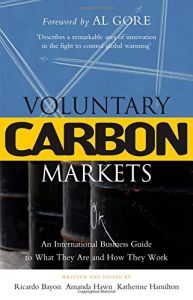Join getAbstract to access the summary!

Join getAbstract to access the summary!
Ricardo Bayon, Amanda Hawn and Katherine Hamilton
Voluntary Carbon Markets
An International Business Guide to What They Are and How They Work
Earthscan, 2007
What's inside?
Neither technology nor good-willed environmentalism will stop climate change. The market will.
Recommendation
This book is dense and technical, yet worth the time of any reader with a serious interest in climate policy. Ricardo Bayon, Amanda Hawn and Katherine Hamilton do a good job of explaining how the carbon markets work and how they relate to other important markets, such as that for renewable energy certificates (RECs) in the U.S. They offer a sampling of expert opinions on the role and the future of these markets. The authors openly express their view that climate change is a reality and that the markets can help solve it. Yet, at the same time, they are dispassionate, reasonably objective and fair in their presentation of dissenting views. getAbstract recommends this book to corporate leaders who wish to become more socially responsible and to anyone interested in sustainable practices.
Summary
About the Authors
Ricardo Bayon is director of a leading ecosystem and environmental markets Web site. Amanda Hawn is the Web sites’s managing editor and Katherine Hamilton is head of carbon programs.

















Comment on this summary